Part 7: November 20 Broadcast

You are listening to BBC radio 4. In an hour, we will be presenting a retrospective on popular music of the decade. For the next hour, Professor David Stephenson will be presenting a documentary on the second 80 years war of the eighteenth century. This series will be running every third day, up to 50 episodes. If you want news of the current war in the Middle East please channel in to BBC radio 1.
 Good evening, and welcome to BBC radio 4. I’m Professor David Stephenson, professor of Dutch historical studies at Cambridge. This is the seventh part of our 50 episode special on the second 80 years war over Europe. Joining me for these broadcasts are fellow researchers and scholars Doctor Albert Andrews, specialist in German studies from the Berlin academy, Professor Robert Lowe, specialist in French studies at Cambridge, and a graduate student and technical assistant, Anton Thatcher. Last week, we presented the fall of Spain, and the rise of the Bourbon monarch of Spain and France.
Good evening, and welcome to BBC radio 4. I’m Professor David Stephenson, professor of Dutch historical studies at Cambridge. This is the seventh part of our 50 episode special on the second 80 years war over Europe. Joining me for these broadcasts are fellow researchers and scholars Doctor Albert Andrews, specialist in German studies from the Berlin academy, Professor Robert Lowe, specialist in French studies at Cambridge, and a graduate student and technical assistant, Anton Thatcher. Last week, we presented the fall of Spain, and the rise of the Bourbon monarch of Spain and France. The Dutch garrison under Ouwerkerk quickly moved the garrison in Paris to around the factory town of Nancy, the French army moved out rapidly to meet them, consisting largely of masses of light cavalry. While the Dutch had a slight numbers advantage, tradition held that the cavalry was to be considered the equivalent of several men which meant the French numbers hid their potential effectiveness. Divided into several disparate army sections, the French had failed to consolidate their army into a single force.
The Dutch garrison under Ouwerkerk quickly moved the garrison in Paris to around the factory town of Nancy, the French army moved out rapidly to meet them, consisting largely of masses of light cavalry. While the Dutch had a slight numbers advantage, tradition held that the cavalry was to be considered the equivalent of several men which meant the French numbers hid their potential effectiveness. Divided into several disparate army sections, the French had failed to consolidate their army into a single force.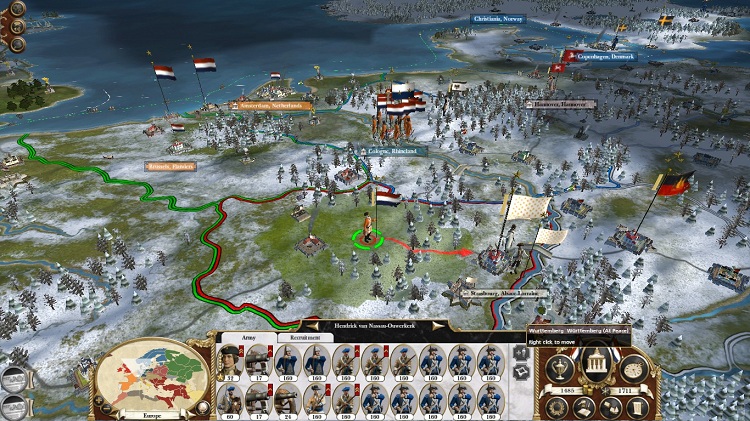
The Dutch advance to the industrial town of Nancy. The French can clearly be seen divided into their two field armies, one of primarily cavalry, the second of infantry, and their Strasbourg city garrison.
 It’s theorized that without any strong generals or leaders remaining, the relatively inexperienced colonels, not one of whom had warranted the cost of promotion and the pay raise them and their elected general staff would have received, had splintered the army around Strasbourg, each claiming regiments and battalions that they could bribe the loyalty of. Each jealously refusing to cooperate, their operational plan to invade the Dutch was virtually non-existent, with the idea that whoever defeated them would be in a strong position to form a military coup in Paris, or convince the royalty to promote them to lead the entire French army.
It’s theorized that without any strong generals or leaders remaining, the relatively inexperienced colonels, not one of whom had warranted the cost of promotion and the pay raise them and their elected general staff would have received, had splintered the army around Strasbourg, each claiming regiments and battalions that they could bribe the loyalty of. Each jealously refusing to cooperate, their operational plan to invade the Dutch was virtually non-existent, with the idea that whoever defeated them would be in a strong position to form a military coup in Paris, or convince the royalty to promote them to lead the entire French army. The poorly organized French army assaulted the Dutch in disorganized waves, separated into 3 armies, they weren’t coordinated enough to form up before attacking. Cavalry ran forward as fast as they could, while the infantry tried in vain to keep up. The cannons, aged demicannons and sakers were left in Strasbourg, too cumbersome to make the journey.
The poorly organized French army assaulted the Dutch in disorganized waves, separated into 3 armies, they weren’t coordinated enough to form up before attacking. Cavalry ran forward as fast as they could, while the infantry tried in vain to keep up. The cannons, aged demicannons and sakers were left in Strasbourg, too cumbersome to make the journey.
Infantry formed into ragged waves try to advance and support the charging Gendarmerie.
 The Dutch had deployed in a strong defensive position. They had 5 heavy columns of professional infantry on their left flank, prepared to counter a cavalry movement, and a center of militia and conscripts. Their right was anchored by 3 battalions of line and the ancient regiment of pike militia. Behind on a hill were a dozen Dutch cannons, including eight aged demicannon formed into a battery.
The Dutch had deployed in a strong defensive position. They had 5 heavy columns of professional infantry on their left flank, prepared to counter a cavalry movement, and a center of militia and conscripts. Their right was anchored by 3 battalions of line and the ancient regiment of pike militia. Behind on a hill were a dozen Dutch cannons, including eight aged demicannon formed into a battery.
Ouwerkerk, disdainful of professional line infantry kept them in reserve, meaning the main fighting body were the militia.
 Cavalry swarmed forward in ragged waves. Cannonballs blew through their ranks, spurring the horses onward. They attempted to get around the flanks on either side of the Dutch infantry, but were entangled on the line’s square infantry and pikes. Squares firing into them quickly scattered many of the French cavalry.
Cavalry swarmed forward in ragged waves. Cannonballs blew through their ranks, spurring the horses onward. They attempted to get around the flanks on either side of the Dutch infantry, but were entangled on the line’s square infantry and pikes. Squares firing into them quickly scattered many of the French cavalry.
Dutch line infantry were in such dense columns that their squares overlapped.
 By the time the infantry were in range to make contact, the cavalry had been completely scattered. The French moved to make contact along their left flank, hoping to overwhelm the Dutch on that flank before turning into their center. The Dutch similarly extended their columns on their left into a flanking line and moved to envelope the French.
By the time the infantry were in range to make contact, the cavalry had been completely scattered. The French moved to make contact along their left flank, hoping to overwhelm the Dutch on that flank before turning into their center. The Dutch similarly extended their columns on their left into a flanking line and moved to envelope the French.
The Dutch right flank pushes away the last of the Gendarmerie as the French infantry mass along their left.
 To counter the slightly more numerous French left flank, the Dutch centre right issued a series of charges across the front, relying on the conscripts, cavalry and pike militia to tangle and delay the French forces, giving the Dutch enough time on their own left flank to encircle the enemy. Once encircled, the French soldiers were shot in the back by the Dutch regulars. The militia in melee held them in place, and so they were incapable of returning fire before the charge to their rear slammed into them.
To counter the slightly more numerous French left flank, the Dutch centre right issued a series of charges across the front, relying on the conscripts, cavalry and pike militia to tangle and delay the French forces, giving the Dutch enough time on their own left flank to encircle the enemy. Once encircled, the French soldiers were shot in the back by the Dutch regulars. The militia in melee held them in place, and so they were incapable of returning fire before the charge to their rear slammed into them.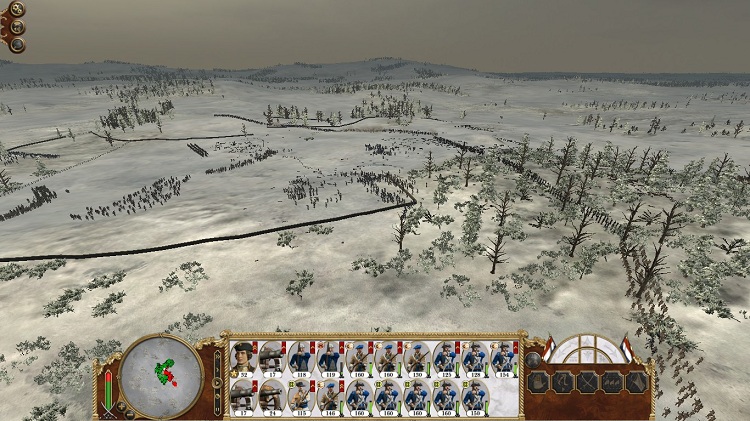
The Dutch moving to envelope the French from the left. The main mass of French were on the right, but despite this were still outnumbered.
 The French army was forced into retreat. Dutch forces pursued them, but kept them away from their fortifications around Strasbourg. They rallied in the territory of their German allies in Wurtemberg, but were soon ousted when the Regent, afraid the Dutch would pursue them into the German countryside expelled them and annulled their alliance. Forced back into the countryside and immensely demoralized, the Few French soldiers were in no position to stop the Dutch. When the Dutch took Strasburg completely unopposed, the French army disbanded entirely and the French monarchy were forced into hiding in the Americas held by the Spanish.
The French army was forced into retreat. Dutch forces pursued them, but kept them away from their fortifications around Strasbourg. They rallied in the territory of their German allies in Wurtemberg, but were soon ousted when the Regent, afraid the Dutch would pursue them into the German countryside expelled them and annulled their alliance. Forced back into the countryside and immensely demoralized, the Few French soldiers were in no position to stop the Dutch. When the Dutch took Strasburg completely unopposed, the French army disbanded entirely and the French monarchy were forced into hiding in the Americas held by the Spanish.
The Dutch suffered only a third the casualties of the French, and were in an excellent position to drive the remaining soldiers away from Strasbourg.
 It’s a common question to historians, just why the French in exile had chosen to fight the Dutch on open ground. Strasbourg was a fortified city, and could have provided a city garrison of concerned citizens in addition to reinforcing armies held in reserve.
It’s a common question to historians, just why the French in exile had chosen to fight the Dutch on open ground. Strasbourg was a fortified city, and could have provided a city garrison of concerned citizens in addition to reinforcing armies held in reserve. One theory was the French had simply under estimated the Dutch garrison at Paris. It was known that Ouwerkerk had favoured poorly trained militia in the past, and that the Paris garrison was almost entirely a militia based force.
One theory was the French had simply under estimated the Dutch garrison at Paris. It was known that Ouwerkerk had favoured poorly trained militia in the past, and that the Paris garrison was almost entirely a militia based force. While this is true, the Dutch had called upon a tremendous contingent from Amsterdam of professional standing soldiers. In fact, the Amsterdam force, as well as the troops invested in Westphalia, heavily outnumbered the conscript force in France. This wasn't strange news to the French, who would have been aware of the Amsterdam standing army, either from word from their own spies and agents, or simply by information from their trade to and from the Dutch, which they were engaged in at the time. It's possible however, that they underestimated the speed with which they could be mobilized.
While this is true, the Dutch had called upon a tremendous contingent from Amsterdam of professional standing soldiers. In fact, the Amsterdam force, as well as the troops invested in Westphalia, heavily outnumbered the conscript force in France. This wasn't strange news to the French, who would have been aware of the Amsterdam standing army, either from word from their own spies and agents, or simply by information from their trade to and from the Dutch, which they were engaged in at the time. It's possible however, that they underestimated the speed with which they could be mobilized. My personal theory is the French government had intended for a glorious victory over the Dutch, sweeping through their army, and on into Brussels, then either Paris or Amsterdam. They had likely underestimated the amount of troops the United Provinces could field, as they had an accurate troop count of men who had moved to invade Spain. With over ten million guilders being funneled into keeping troops in Spain armed and fed every year, it was probably assumed the Amsterdam garrison and the Paris garrison were of the lowest common denominator remaining, while the premier army of the Dutch had gone far abroad, separated from France by the Pyrenees. They had not anticipated that approximately 1200 of the men in the 2400 strong army were well drilled and trained in line tactics and advanced formations.
My personal theory is the French government had intended for a glorious victory over the Dutch, sweeping through their army, and on into Brussels, then either Paris or Amsterdam. They had likely underestimated the amount of troops the United Provinces could field, as they had an accurate troop count of men who had moved to invade Spain. With over ten million guilders being funneled into keeping troops in Spain armed and fed every year, it was probably assumed the Amsterdam garrison and the Paris garrison were of the lowest common denominator remaining, while the premier army of the Dutch had gone far abroad, separated from France by the Pyrenees. They had not anticipated that approximately 1200 of the men in the 2400 strong army were well drilled and trained in line tactics and advanced formations.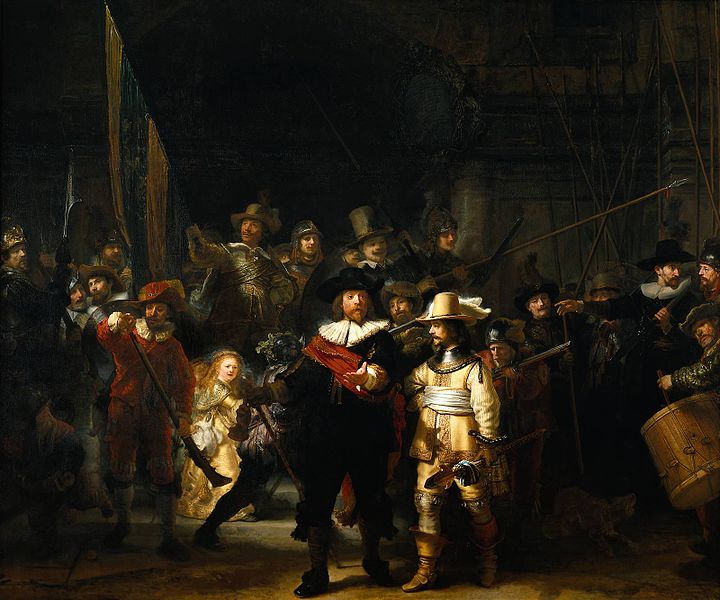
Ouwerkerk's love of the militia wasn't entirely unfounded as a Dutch patriot. The militia were immortalized as heroes during their revolution against the Hapsburg.
 It’s also possible that it was required to bolster the French public opinion of their crushed monarchy. A victory there would have allowed the French to bolster the morale of their populace, and they may have thought they required the gamble. A desperate move thrown forward without much hope from on high.
It’s also possible that it was required to bolster the French public opinion of their crushed monarchy. A victory there would have allowed the French to bolster the morale of their populace, and they may have thought they required the gamble. A desperate move thrown forward without much hope from on high.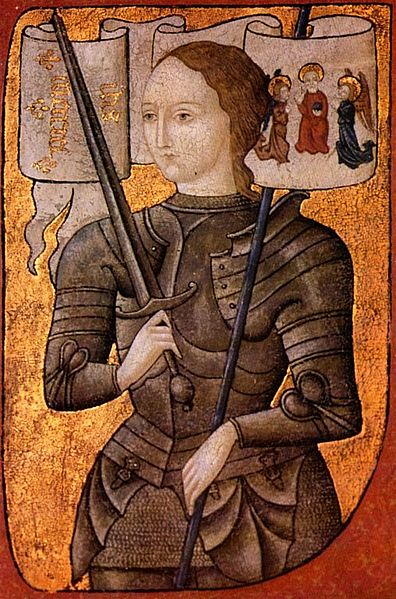
They may have also prayed for a miracle if they acted courageously enough. Many French citizens in Alsace Lorraine had flocked to shrines and tributes regarding Joan of Arc. Domremy la Pucelle, her birth place, was about a day or two walking from Nancy.
 It’s also possible that they didn't think they could lift the Dutch siege if it set in. If the United Provinces had opted not to fight at the city walls, the French forces would be slowly starved, and with no allies in sight capable of opposing the Dutch, it would have seemed unlikely that the Dutch could be driven back before they would have been forced to sally forth, deprived of years of food supplies and with hundreds of men dead of starvation and disease, while the well equipped land caravans normally devoted to trading would ensure the Dutch army was well fed, with plenty of replacement troops being rotated in and out as necessary. However, allowing the siege to occur on their home soil would have let them form into two separate armies. One, consisting of their professional soldiers and cavalry, while the remainder consisted of civilians and militia. Had they done so, their army would have contained over a thousand more men able to join in from the countryside on a temporary basis to defend their homes, enough potentially to encircle and destroy the Dutch army.
It’s also possible that they didn't think they could lift the Dutch siege if it set in. If the United Provinces had opted not to fight at the city walls, the French forces would be slowly starved, and with no allies in sight capable of opposing the Dutch, it would have seemed unlikely that the Dutch could be driven back before they would have been forced to sally forth, deprived of years of food supplies and with hundreds of men dead of starvation and disease, while the well equipped land caravans normally devoted to trading would ensure the Dutch army was well fed, with plenty of replacement troops being rotated in and out as necessary. However, allowing the siege to occur on their home soil would have let them form into two separate armies. One, consisting of their professional soldiers and cavalry, while the remainder consisted of civilians and militia. Had they done so, their army would have contained over a thousand more men able to join in from the countryside on a temporary basis to defend their homes, enough potentially to encircle and destroy the Dutch army. Of course lastly, it may simply have been rivalries within the officers. Each had coveted the title and fame that would come with defeating the Dutch, and so it is possible that they had acted rashly, gambling it all on a decisive and historic moment. Once one fragment of the army had mobilized on its own, the other two could not afford to sit back and allow a full third of their army get destroyed piecemeal.
Of course lastly, it may simply have been rivalries within the officers. Each had coveted the title and fame that would come with defeating the Dutch, and so it is possible that they had acted rashly, gambling it all on a decisive and historic moment. Once one fragment of the army had mobilized on its own, the other two could not afford to sit back and allow a full third of their army get destroyed piecemeal. Whatever the case was, the battle was one of the greatest military disasters in history. Thousands of French soldiers were massacred, and the French as a nation were completely eradicated. While France still lived on in name, as the French Republic under the Western Atlantic Federation, they were a mere puppet state, and a colony to be plundered by the Dutch. The final fall of France sent a jolt through the powers of Europe. The old regimes were no longer invincible. A new era filled with new powers was imminent, and it was up to them to adopt, or die.
Whatever the case was, the battle was one of the greatest military disasters in history. Thousands of French soldiers were massacred, and the French as a nation were completely eradicated. While France still lived on in name, as the French Republic under the Western Atlantic Federation, they were a mere puppet state, and a colony to be plundered by the Dutch. The final fall of France sent a jolt through the powers of Europe. The old regimes were no longer invincible. A new era filled with new powers was imminent, and it was up to them to adopt, or die.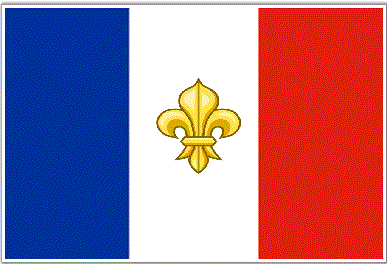
The Dutch officially granted the French their republican flag after the battle of Nancy and capture of Strasbourg. The pattern was modeled after the Dutch flag, but was given the Fleur de Lis to try and grant a French national perception in the populace. By this time, the French cabinet under the rule of the Dutch had essentially granted the illusion of French autonomy, and sentiments of rebellion were completely quelled.
 The ramifications were especially dire to the near fallen Spanish Empire. Without the strong French presence at the front door step of the Dutch, they could divert their armies to rooting out the last few Spanish strongholds in the Mediterranean, and to their few remaining overseas colonies.
The ramifications were especially dire to the near fallen Spanish Empire. Without the strong French presence at the front door step of the Dutch, they could divert their armies to rooting out the last few Spanish strongholds in the Mediterranean, and to their few remaining overseas colonies.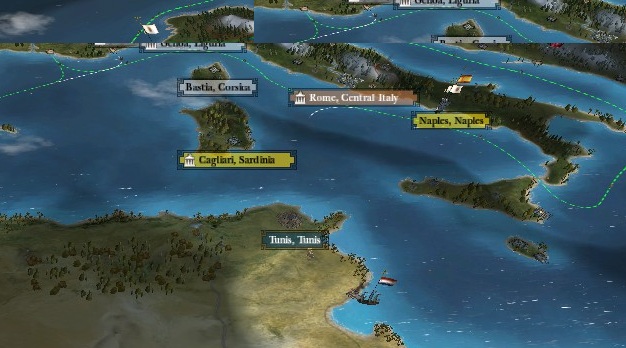
The Spanish were able to keep control of their overseas colonies so long as they kept a toehold in Europe. Once they no longer had the backing or industry of Europe, they would not have the resources required to control their overseas colonies.
 Europe, specifically the North western powers had become extremely dominant technologically and in their military. The East Indies, Africa, the Americas were all viewed with near disdain by the great European armies. Barbary corsairs, bane of shipping along the North African coast were shut down and pulled apart by vengeful Europeans. Similarly, Morocco had fallen to a tiny garrison of British invaders from the small settlement in the fortifications around Gibraltar. An entire nation annexed by a minor fort garrison of a primarily naval power.
Europe, specifically the North western powers had become extremely dominant technologically and in their military. The East Indies, Africa, the Americas were all viewed with near disdain by the great European armies. Barbary corsairs, bane of shipping along the North African coast were shut down and pulled apart by vengeful Europeans. Similarly, Morocco had fallen to a tiny garrison of British invaders from the small settlement in the fortifications around Gibraltar. An entire nation annexed by a minor fort garrison of a primarily naval power.
The British parliament had dispatched an army by sea to assist, but arrived with the capital already taken.
 While these European nations had shuttled fleets south to shut down piracy in their Mediterranean trade routes, the Portuguese had moved their navy and army to Spanish controlled Naples, one of the few remaining Spanish strongholds on the continent of Europe. As they were a part of the Western Atlantic Federation, this news delighted the ministers Amsterdam.
While these European nations had shuttled fleets south to shut down piracy in their Mediterranean trade routes, the Portuguese had moved their navy and army to Spanish controlled Naples, one of the few remaining Spanish strongholds on the continent of Europe. As they were a part of the Western Atlantic Federation, this news delighted the ministers Amsterdam.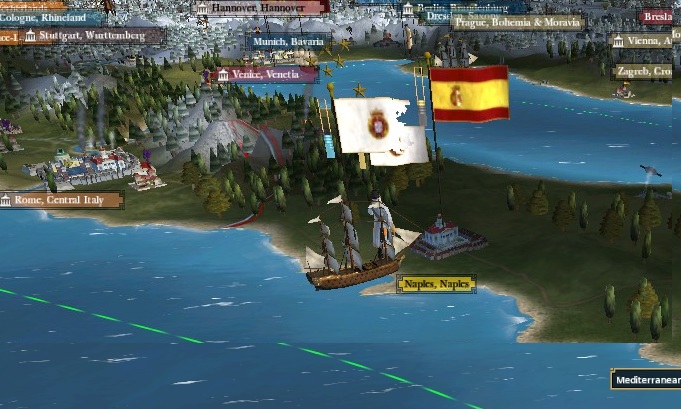
Spain can no longer withstand the Portuguese, who had traditionally been the weaker nation.
 All of these conquests were certainly advantageous to the Western Atlantic Federation as a whole, but to the Netherlands, the more powerful the disparate elements of their coalition became individually, the more they could contest the United Province’s influence over their policies and actions. Great Britain in particular, though only an ally of the Federation, held great sway over the direction their politics went.
All of these conquests were certainly advantageous to the Western Atlantic Federation as a whole, but to the Netherlands, the more powerful the disparate elements of their coalition became individually, the more they could contest the United Province’s influence over their policies and actions. Great Britain in particular, though only an ally of the Federation, held great sway over the direction their politics went. The control of Europe and the Americas gradually became a point of contention between the Dutch and British. Diplomatic niceties and legitimate camaraderie seems to have persisted during this time, with the Dutch, French, Spanish, Portuguese and Northwest Germans seemingly a strong and loyal shield against a centralized, united Europe the British were not yet wary that they themselves had the capacity to become a united European force capable of threatening the tiny isles. Nor did the Dutch yet consider the tremendous advantageous position the massive and advanced English fleet had in potentially crippling the economy of Amsterdam.
The control of Europe and the Americas gradually became a point of contention between the Dutch and British. Diplomatic niceties and legitimate camaraderie seems to have persisted during this time, with the Dutch, French, Spanish, Portuguese and Northwest Germans seemingly a strong and loyal shield against a centralized, united Europe the British were not yet wary that they themselves had the capacity to become a united European force capable of threatening the tiny isles. Nor did the Dutch yet consider the tremendous advantageous position the massive and advanced English fleet had in potentially crippling the economy of Amsterdam. But for now, the Dutch were content to strengthen their position in the east, using a considerable sum of guilders earned by the V.O.C. to recruit a new army of Sepoys and V.O.C. company infantry.
But for now, the Dutch were content to strengthen their position in the east, using a considerable sum of guilders earned by the V.O.C. to recruit a new army of Sepoys and V.O.C. company infantry. Similar to the Americas army, the Dutch army raised in India could not rely on a large, loyal Dutch population, and so militia and conscripts would not do. Instead, V.O.C. infantry were trained to the same high standard as well drilled and disciplined line infantry of continental Europe.
Similar to the Americas army, the Dutch army raised in India could not rely on a large, loyal Dutch population, and so militia and conscripts would not do. Instead, V.O.C. infantry were trained to the same high standard as well drilled and disciplined line infantry of continental Europe.
While just as skilled with their guns as line infantry, the sepoys were not as loyal to the Dutch cause as a typical citizen, and so Karel Vrooman, general in India did not trust them, even though he employed thousands.
 If the Dutch militia army were a century behind, the soldiers of the armies of India were perhaps three centuries behind. Using ancient styles of stationary cannons (though much larger in caliber than the Dutch), poorly armoured troops using sword and wooden shield, and old muskets, the likes of which you could have seen in the 1400s, bow armed cavalry and even lancers astride great elephants formed their armies. Against a fully modern army, the difference between the two was painfully obvious. The Indian Dervishes, though brave and skilled swordsmen, could not avoid the utter hail of Dutch bullets as they advanced.
If the Dutch militia army were a century behind, the soldiers of the armies of India were perhaps three centuries behind. Using ancient styles of stationary cannons (though much larger in caliber than the Dutch), poorly armoured troops using sword and wooden shield, and old muskets, the likes of which you could have seen in the 1400s, bow armed cavalry and even lancers astride great elephants formed their armies. Against a fully modern army, the difference between the two was painfully obvious. The Indian Dervishes, though brave and skilled swordsmen, could not avoid the utter hail of Dutch bullets as they advanced.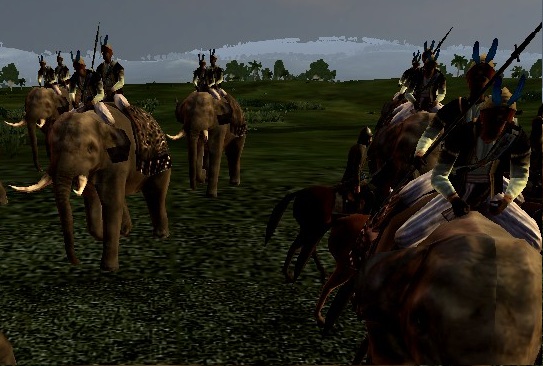
The Dutch V.O.C. loved fighting war elephants. A war elephant meant the man who killed it could take the ivory tusks!
 And it was this simple fact that compelled the Dutch to turn their eyes on India and they began by laying plans to invade Mysore. A land of great wealth in trade of tea, spices and tax revenue from her massive population, India was a poorly defended gem in the East. This wasn’t all that motivated them however. The Maratha republic had crushed much of their old enemy, the Mughal Empire, and was readily poised to dominate all of India single handed. They had already pushed the Portuguese out of Goa, and the Dutch in Ceylon were concerned that a unified India may seek to expel the Dutch from their lucrative East Indian trade routes, a major source of their income. A strong foothold on the mainland, with a garrison capable of threatening the Marathas from the south could very well compel them to maintain the peace with the Dutch.
And it was this simple fact that compelled the Dutch to turn their eyes on India and they began by laying plans to invade Mysore. A land of great wealth in trade of tea, spices and tax revenue from her massive population, India was a poorly defended gem in the East. This wasn’t all that motivated them however. The Maratha republic had crushed much of their old enemy, the Mughal Empire, and was readily poised to dominate all of India single handed. They had already pushed the Portuguese out of Goa, and the Dutch in Ceylon were concerned that a unified India may seek to expel the Dutch from their lucrative East Indian trade routes, a major source of their income. A strong foothold on the mainland, with a garrison capable of threatening the Marathas from the south could very well compel them to maintain the peace with the Dutch. In the West, Spanish held Cuba was in a similar state. With tobacco prices comparatively rising, and their sugar prices slowly dropping, the Dutch needed a new territory to take, and Cuba was a land of convenience. The experienced colonial marines in the isles were once again loaded into ships and set sail for Havana.
In the West, Spanish held Cuba was in a similar state. With tobacco prices comparatively rising, and their sugar prices slowly dropping, the Dutch needed a new territory to take, and Cuba was a land of convenience. The experienced colonial marines in the isles were once again loaded into ships and set sail for Havana. Cuba was renowned for its quality tobacco, and for their highly productive plantations. The Dutch could have capitalized on the market change by converting sugar plantations into tobacco and cotton plantations, but that would cost them millions of guilders, and leave them without either product for shipping for months. Cuba, scarcely defended at all, and the Dutch with idle armies to police it had no real intention of letting the opportunity go to waste.
Cuba was renowned for its quality tobacco, and for their highly productive plantations. The Dutch could have capitalized on the market change by converting sugar plantations into tobacco and cotton plantations, but that would cost them millions of guilders, and leave them without either product for shipping for months. Cuba, scarcely defended at all, and the Dutch with idle armies to police it had no real intention of letting the opportunity go to waste.In our next broadcast, we present the invasion of India, and the expansion of the Dutch Americas. Next, half an hour of our retrospective on popular music of the decade. In half an hour, we will be presenting world news. If you want news of the current war in the Middle East please channel in to BBC radio 1. David Stephenson will be presenting more on the 80 years war in 3 days.